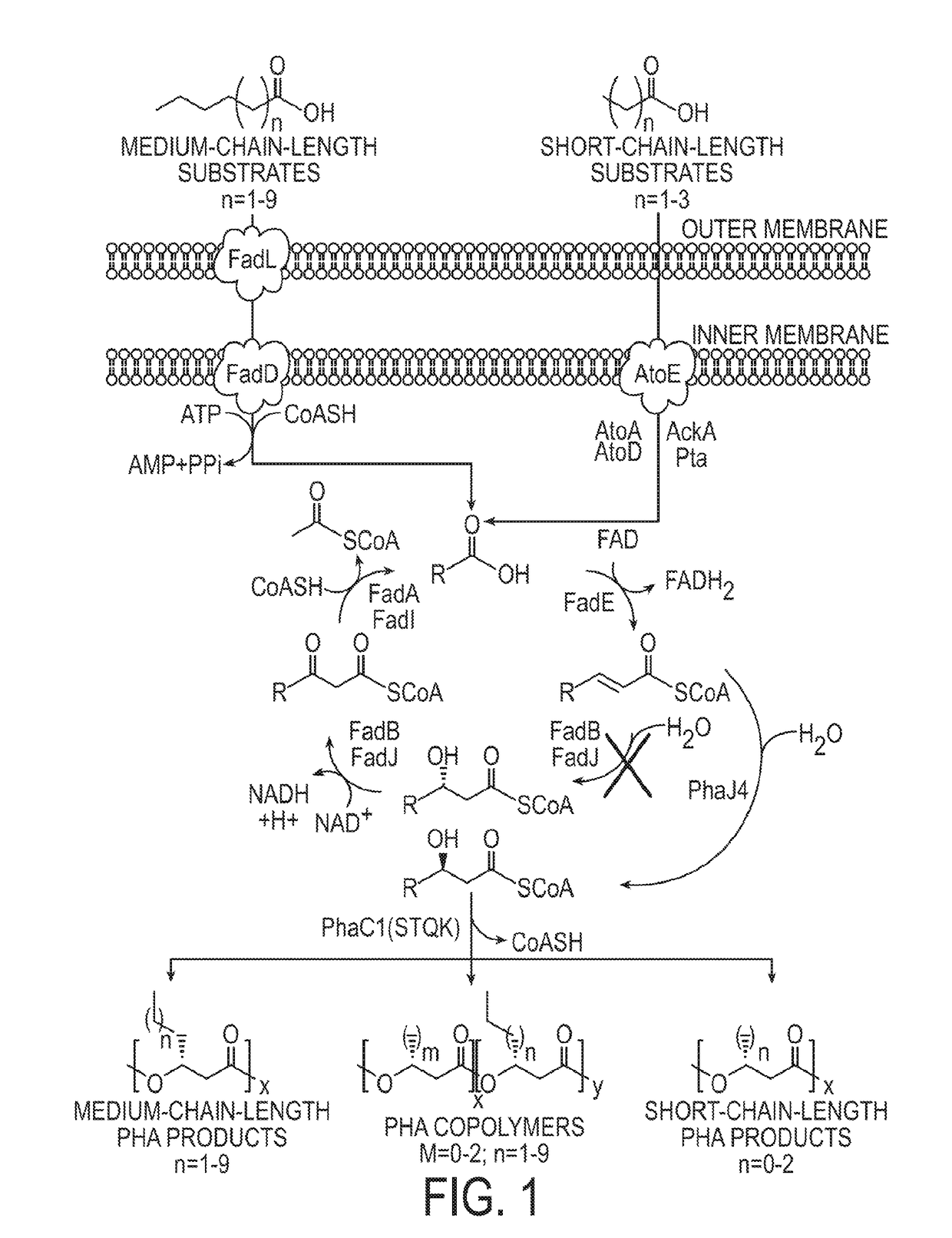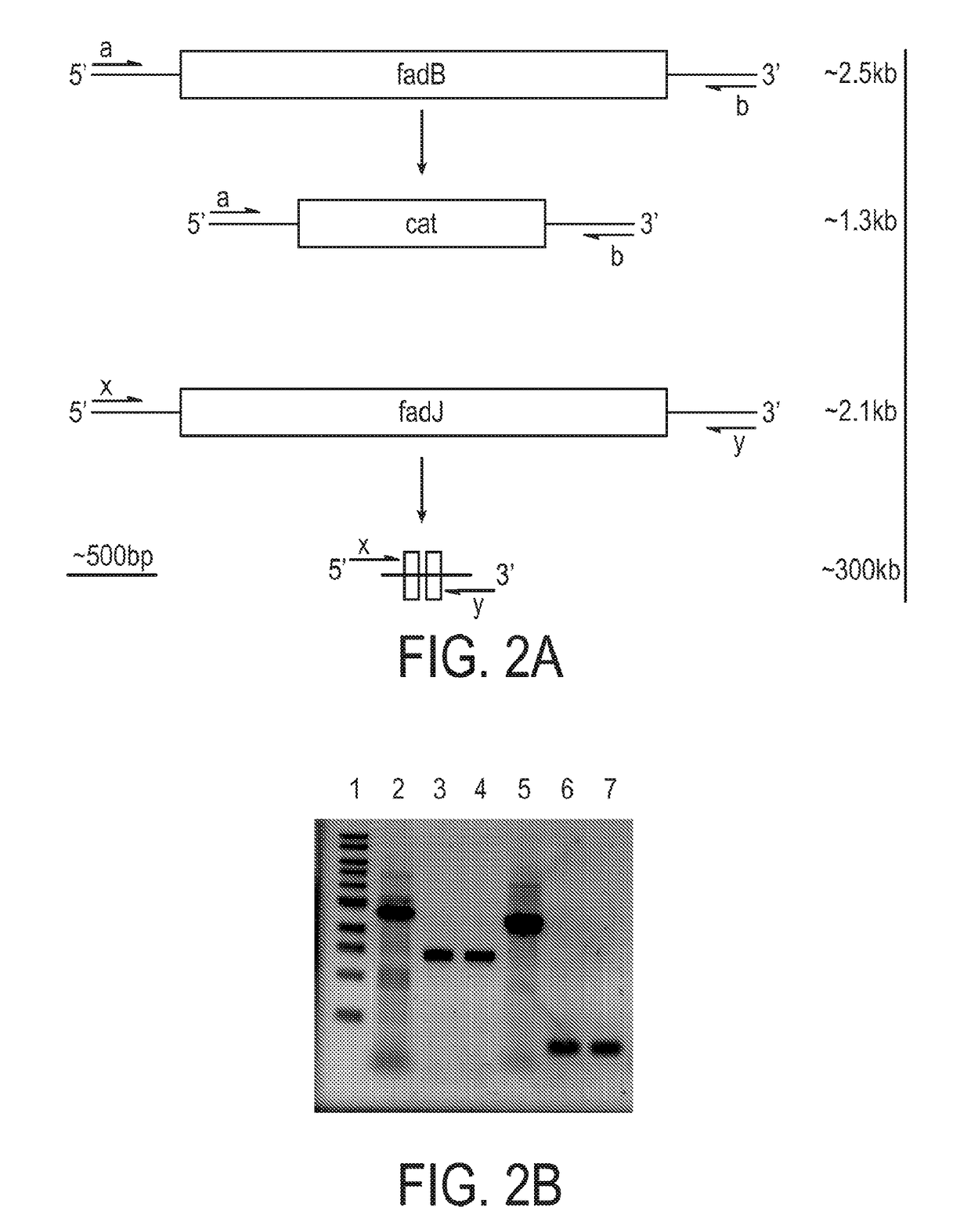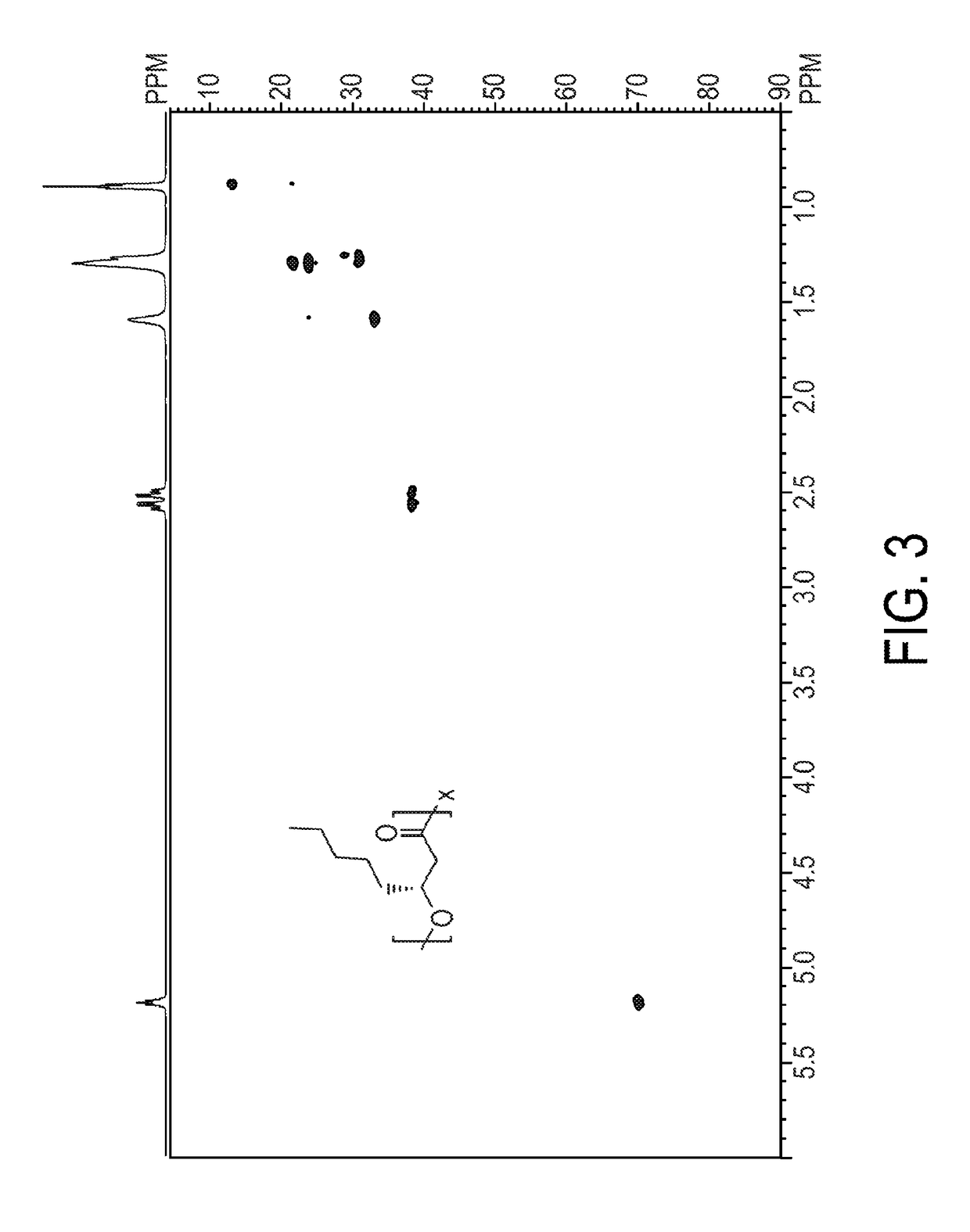Engineered strain of escherichia coli for production of poly-r-3-hydroxyalkanoate polymers with defined monomer unit composition and methods based thereon
a technology of escherichia coli and polymer, applied in the field of biodegradable poly (3hydroxyalkanoate) polymers and copolymers, can solve the problems of loss of control, limited control, and inability to control the repeating unit composition of mcl phas
- Summary
- Abstract
- Description
- Claims
- Application Information
AI Technical Summary
Benefits of technology
Problems solved by technology
Method used
Image
Examples
example 1
6.1 Example 1
Precise Control of Repeating Unit Composition in Biodegradable poly[(R)-3-hydroxyalkanoate] Polymers Synthesized by Escherichia coli
[0191]The composition of medium-chain-length (MCL) poly(3-hydroxyalkanoate) (PHA) biopolymers is normally an uncontrollable random mixture of repeating units with differing side chain lengths. Attempts to generate MCL PHA homopolymers and gain control of the repeating unit composition have been published in native PHA-producing organisms but have limited ranges for the different sizes of repeating units that can be synthesized. This example describes an Escherichia coli-based system that exhibits control over repeating unit composition of both MCL and short-chain-length (SCL) PHAs, covering an unprecedented range of repeating units. The fadB and fadJ genes from the β-oxidation pathway were eliminated from the chromosome of E. coli LS5218. The subsequent blockage in β-oxidation caused a buildup of enoyl-CoA intermediates, which were convert...
example 2
6.2 Example 2
Production of Specified Short-Chain-Length and Medium-Chain-Length Single Repeating Units in poly[(R)-3-hydroxyalkanoate] Copolymers Synthesized in Escherichia coli using Fatty Acid Substrates
[0289]This example describes extension of the work described in Example 1. The production of specified short-chain-length and medium-chain-length single repeating units in poly[(R)-3-hydroxyalkanoates] were synthesized in E. coli using fatty acid substrates. This example also provides an overview and summary of the results obtained in Example 1.
[0290]Introduction
[0291]Poly(3-hydroxyalkanoates) (PHAs) are biodegradable plastics and carbon storage materials that are synthesized by a myriad of microorganisms. PHAs are divided into groups based on repeating unit size. PHAs with repeating units of three to five carbons in length are short-chain-length (SCL) PHAs, and PHAs with repeating units of six to fourteen carbons in length are medium-chain-length (MCL) PHAs. Differences in repeati...
example 3
6.3 Example 3
Engineering E. coli for Improved Production of polyhydroxyalkanoate (PHA)-Based Biodegradable Plastics
[0461]Introduction
[0462]This example sets forth systems and methods for increasing the production of SCL-MCL and other novel PHAs. This example describes the improvement of PHA biopolymer production using metabolic engineering techniques to diversify the supply of monomers for PHA production and increase overall production of the polymers.
[0463]Materials and Methods
[0464]Gene Rearrangement to Control the Molecular Weight of PHA-Based Polymers
[0465]Control over the molecular weights of polymers can have dramatic effects on the physical properties of the materials. Previous studies have demonstrated that gene order and thus enzyme expression levels are partially responsible for controlling the molecular weights of PHA polymers produced in E. coli. PHB polymers have been produced with ultra-high-molecular-weights using gene rearrangement (38). It is also known that PHA syn...
PUM
| Property | Measurement | Unit |
|---|---|---|
| temperature | aaaaa | aaaaa |
| temperature | aaaaa | aaaaa |
| temperature | aaaaa | aaaaa |
Abstract
Description
Claims
Application Information
 Login to View More
Login to View More - R&D
- Intellectual Property
- Life Sciences
- Materials
- Tech Scout
- Unparalleled Data Quality
- Higher Quality Content
- 60% Fewer Hallucinations
Browse by: Latest US Patents, China's latest patents, Technical Efficacy Thesaurus, Application Domain, Technology Topic, Popular Technical Reports.
© 2025 PatSnap. All rights reserved.Legal|Privacy policy|Modern Slavery Act Transparency Statement|Sitemap|About US| Contact US: help@patsnap.com



